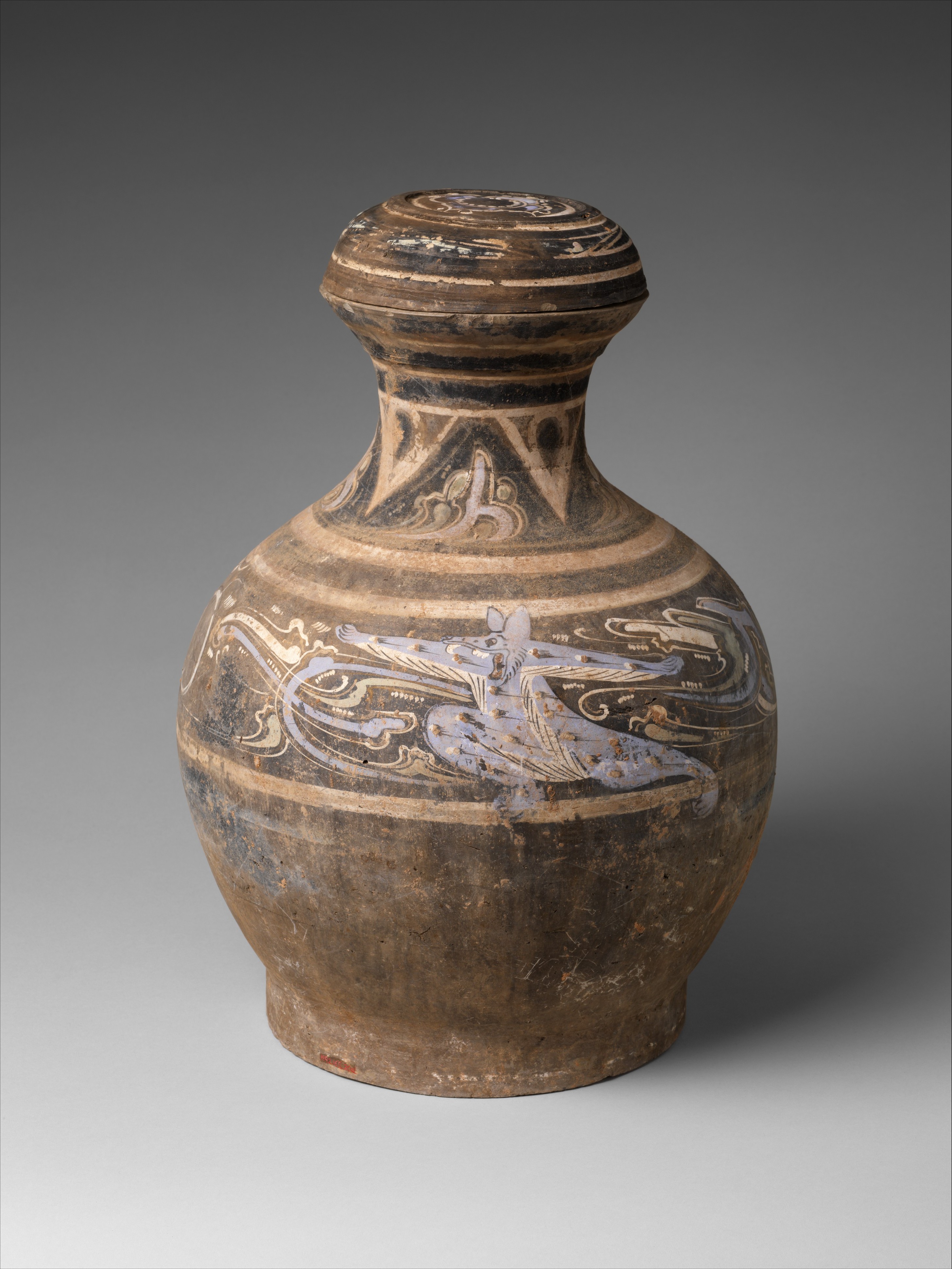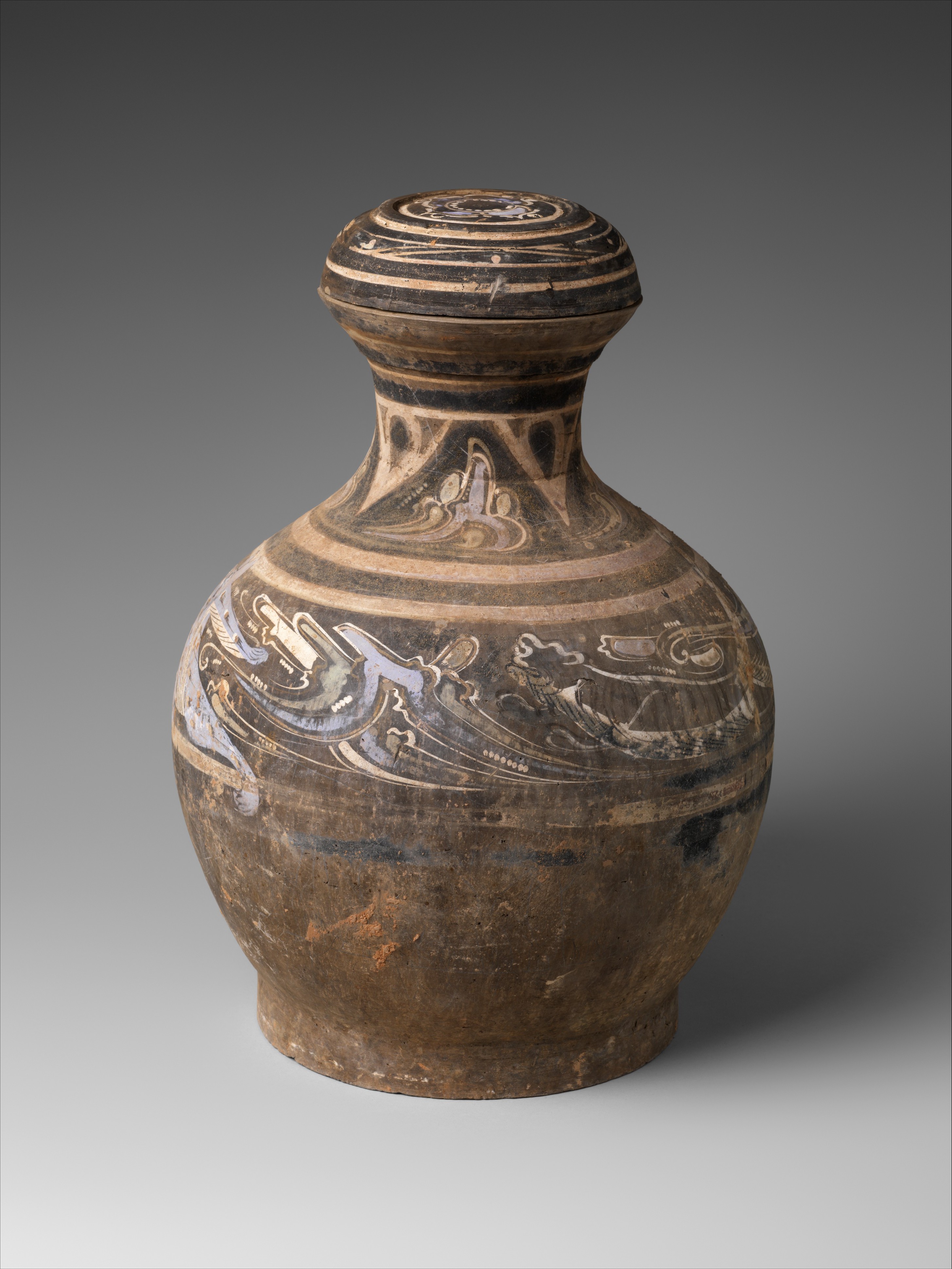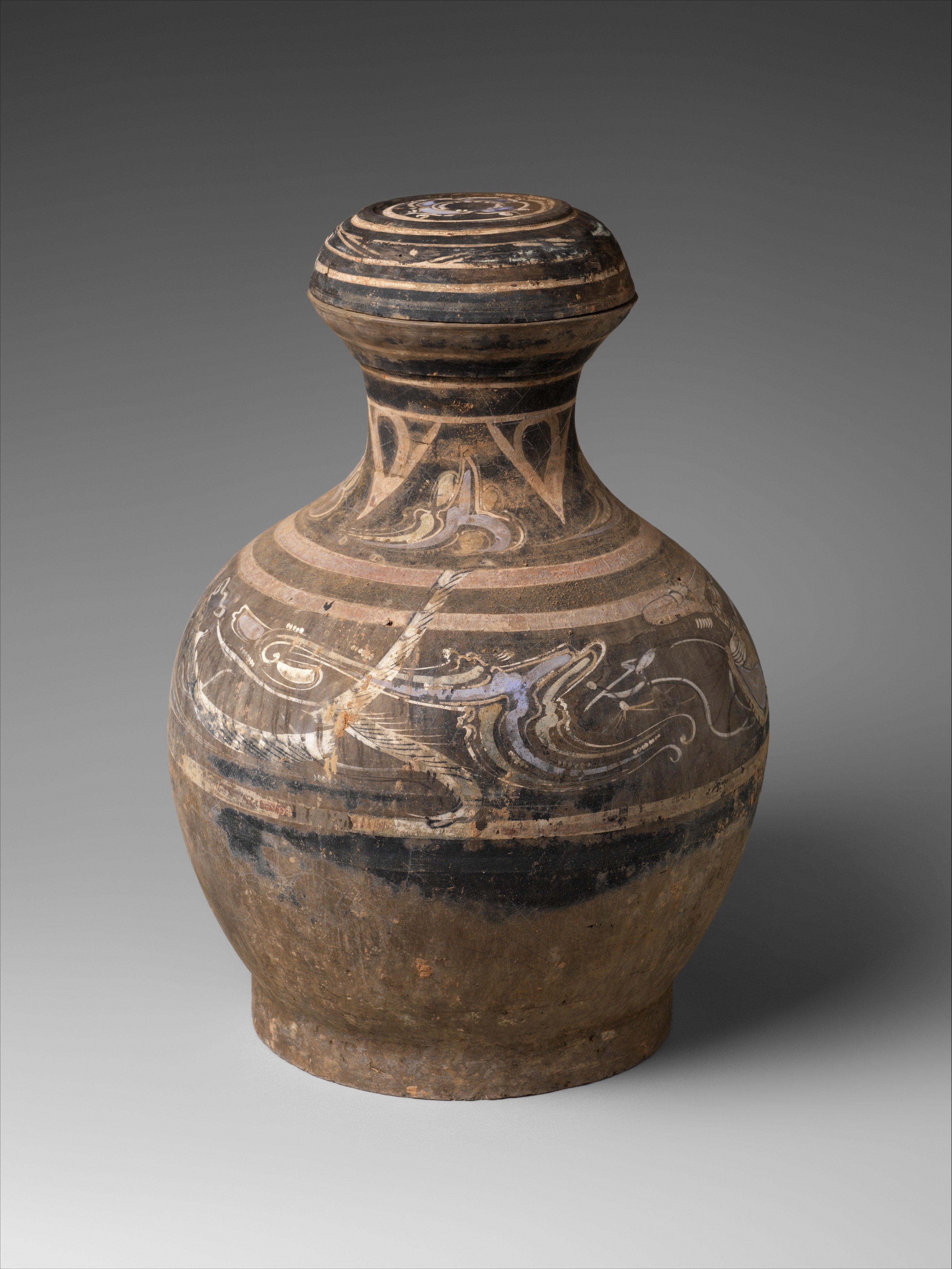Covered Jar (Hu)
This mortuary vessel is decorated with the animated drama of a blue beast with bared fangs lunging at a mounted archer. Roaming the other side of the hu is a long striding tiger. Executed with brilliant pigments and confident black brushstrokes, the decoration perfectly expresses the boldly assertive character of the Western Han dynasty and is, moreover, one of the finest known examples of Han painting. The iconography is celestial: the blue beast represents the star Sirius, known in China as the Heavenly Wolf, and the archer is a personification of the adjoining constellation, Bow, whose arrow always points directly at the Wolf. Their companion on the other side is the White Tiger, cosmological symbol of the West, whose domain in the nightly sky borders that of the Wolf and the Bow.
The Wolf is a baleful star. He governs thievery and looting and represents the Xiongnu tribes (Huns) who warred with the Han people on the northwestern borders of China. It is said that when the twinklings of the Wolf star change color, banditry will curse the land; when the star shifts from its normal position, the Xiongnu will be on the warpath. Fortunately, there is the vigilant Bow, who "punishes rebels and knows those who are crafty and evil." Forever pointed at the Wolf, across whose body is an array of ill-boding meteors, the Bow was considered the protector of China. The mounted archer, the eternal image of the nomadic peoples of the Eurasian steppe, is shown hunting the symbolic representation of the Xiongnu.
This image cannot be enlarged, viewed at full screen, or downloaded.
This artwork is meant to be viewed from right to left. Scroll left to view more.





